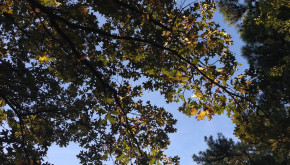
Michigan used to boast the most ash trees in the nation, until loses by emerald ash borer (EAB) knocked it from the top spot. Now, staff at the Michigan Department of Natural Resources (DNR) are working to help Michigan private woodland owners and communities manage their ash resources. The focus is on helping prepare for the infestation of EAB and working to slow ash mortality in the northern portions of the state.
If you have ash trees on your property, now is the time to start planning the transition to other species. Forest health experts recommend reducing, not eliminating, ash to a level that the mortality will not significantly impact the quality of the remaining trees or the productivity of the forest.
Reducing the amount of ash by removing declining and poor vigor ash trees also may help slow and spread and buildup of EAB populations by removing their food source. Generally, the recommendation is to reduce the ash component of upland forest stands to a maximum of 10% of total stand basal area. Vigorous smaller ash should be targeted for retention. Removing one large ash has a much greater effect on reducing EAB population potential than does removing many saplings or a few pole size trees.
Qualifying landowners can receive a free site evaluation by a participating professional forester to learn about the health of their forests and their ash. Landowners can also qualify for up to 50% cost share for a Forest Stewardship Plan that helps their forest stay healthy and productive in the face of EAB.
Michigan landowner Terry Collier participated in the program and notes, “We experienced emerald ash borer quite badly here. Our hunting club has 440 acres and we have been seeing less and less wildlife. We went online to the DNR looking for funding for a forest plan to make the forest better for years to come. We received $900 cost share funding and we committed $1100 to develop a management plan that included cutting ash that have been damaged while they are still marketable. We have tremendous regeneration from our harvest last year, which is better for wildlife plus it has helped us with some of the expenses. Without the forest plan we wouldn’t have known where to start.”
Eligible lands include the non-quarantined counties in the Western Upper Peninsula (Ontonagon, Baraga, Iron, Dickinson, Marquette, Gogebic, and Menominee counties) as well as city parks and privately owned woodlands that lie within a 25 mile radius of the cities of Cheboygan, Alpena, Gaylord, Traverse City, and Petoskey. The work is funded in part, by federal grants from the Great Lakes Restoration Initiative and the Pest and Disease Revolving Loan fund.
For more information, visit www.michigan.gov/foreststewardshipor call 517-335-3355.

